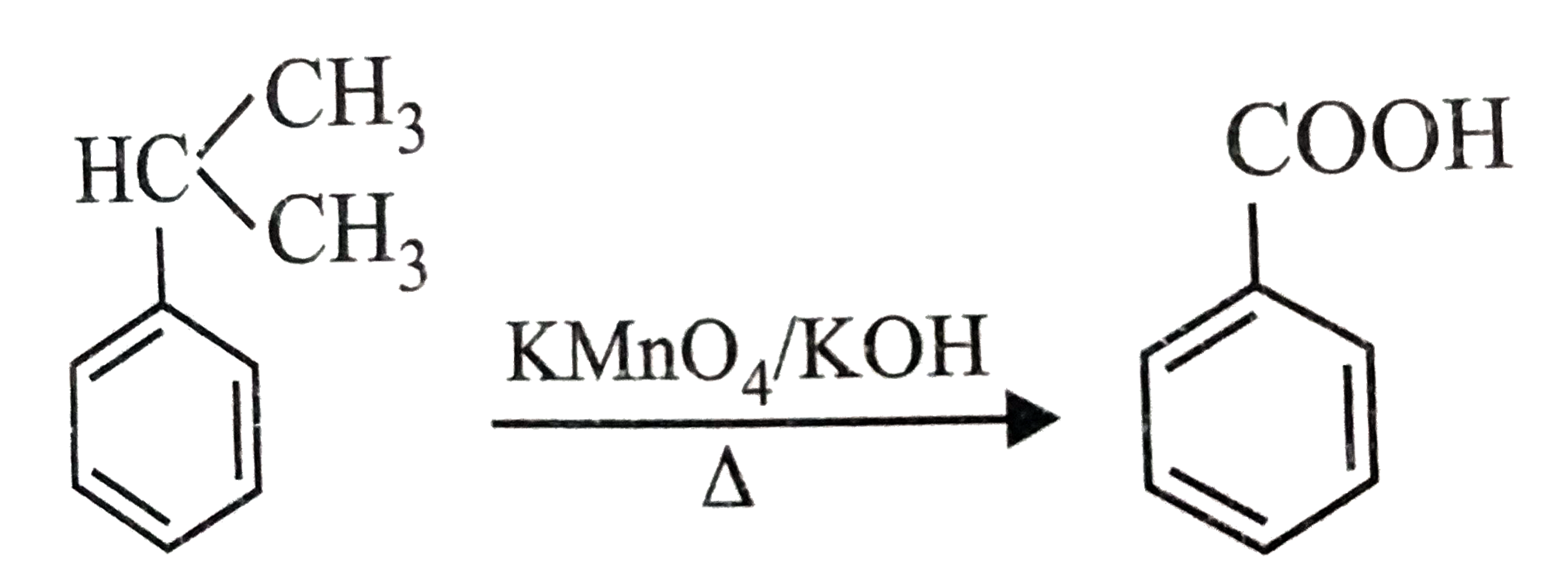Which of the following reaction does not form an ether ?
C6H6OH+RBraq.NaOH−−−−−→
CH3−CH3∣C∣CH3−CH=CH2+ROH+Hg(OOCCF3)2NaBF4−−−→
(CH3)3CCl+C2H5O−Na+→
CH3CH2OHH2SO4−−−→413K
The correct Answer is:C
To determine which of the following reactions does not form an ether, we will analyze each reaction step by step.
Step 1: Analyze the First Reaction
The first reaction involves phenol (C6H5OH) reacting with RBr in the presence of aqueous NaOH.
- Mechanism: The NaOH acts as a base and abstracts a proton (H+) from phenol, resulting in the formation of the phenoxide ion (C6H5O^-). This negatively charged oxygen can then act as a nucleophile and attack the alkyl halide (RBr).
- Product: The product formed is an ether (C6H5OR).
Conclusion: The first reaction forms an ether.
Step 2: Analyze the Second Reaction
The second reaction involves a compound (CH3C(CH3)2) reacting with ROH in the presence of HGOOCCH3O2 and NaDF4.
- Mechanism: The alcohol (ROH) can react with the alkyl group in a nucleophilic substitution reaction, leading to ether formation.
- Product: The product formed is an ether.
Conclusion: The second reaction also forms an ether.
Step 3: Analyze the Third Reaction
The third reaction involves CH3CCl3 reacting with C2H5O^-.
- Mechanism: Here, C2H5O^- is expected to act as a nucleophile. However, due to steric hindrance around the carbon atom (CCl3), the nucleophile cannot attack effectively. Instead, it acts as a base and abstracts a proton (H+) from the adjacent carbon.
- Product: The product formed is an alkene (CH3C(CH3)=CH2) instead of an ether.
Conclusion: The third reaction does not form an ether.
Step 4: Analyze the Fourth Reaction
The fourth reaction involves ethanol (CH3CH2OH) reacting with itself in the presence of H2SO4 at 413 K.
- Mechanism: H2SO4 acts as a dehydrating agent, removing a water molecule and facilitating the formation of an ether.
- Product: The product formed is diethyl ether (C2H5OC2H5).
Conclusion: The fourth reaction forms an ether.
Final Conclusion
After analyzing all four reactions, we find that:
- The first reaction forms an ether.
- The second reaction forms an ether.
- The third reaction does not form an ether (it forms an alkene).
- The fourth reaction forms an ether.
Thus, the reaction that does not form an ether is the third reaction.
The first reaction involves phenol (C6H5OH) reacting with RBr in the presence of aqueous NaOH.
- Product: The product formed is an ether (C6H5OR).
The second reaction involves a compound (CH3C(CH3)2) reacting with ROH in the presence of HGOOCCH3O2 and NaDF4.
- Product: The product formed is an ether.
The third reaction involves CH3CCl3 reacting with C2H5O^-.
- Product: The product formed is an alkene (CH3C(CH3)=CH2) instead of an ether.
The fourth reaction involves ethanol (CH3CH2OH) reacting with itself in the presence of H2SO4 at 413 K.
- Product: The product formed is diethyl ether (C2H5OC2H5).
After analyzing all four reactions, we find that:
- The first reaction forms an ether.
- The second reaction forms an ether.
- The third reaction does not form an ether (it forms an alkene).
- The fourth reaction forms an ether.
Similar Questions
Knowledge Check
Which of the following reactions does not occur ?
A B
B C
C D
D
Which of the following reaction does not produce ethyne ?
View SolutionWhich of following reaction do not form H2?
View SolutionWhich of the following reactions does not form salicylic acid ?
View SolutionWhich of the following on heating does not form an anhydride ?
View SolutionWhich one of the following reactions does not come under hydrolysis type reaction?
View SolutionWhich of the following reactions does not take place?
View SolutionWhich of the following reactions does not take place?
View Solution
